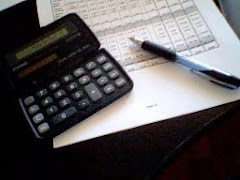 I'm re-thinking my approach to Business Plans as I give another course on the subject at Concordia's Centre for Continuing Education. To consider alternative approaches, I recently reviewed other widely available resources on the Web.
I'm re-thinking my approach to Business Plans as I give another course on the subject at Concordia's Centre for Continuing Education. To consider alternative approaches, I recently reviewed other widely available resources on the Web.
All very un-inspiring. Not convincing in presenting the reasons to document a good Business Plan and entirely discouraging in describing the process for preparing one. Not likely to persuade any busy, results-oriented, documentation-challenged entrepreneur that it's a good idea and that they can do it for themselves.
So I have come to describe my own approach as "Recycling your Business Plan". That best describes the process I recommend of starting simple, then continuously reviewing, revising and expanding the plan to deal with more issues and answer more questions.
I'm reminded of the "million dollar napkin" that one entrepreneur boasts he used to start and guide his business simply by responding to the challenge to put it all on a restaurant napkin.Or the thousands of successful businesses that were launched "on the back of an envelope". It's a good start to your Business Plan.
Here are the steps I recommend to "recycle" your Business plan.
Remember the objective is to arrive at that communications document that confirms the business opportunity, describes your strategy and operating plans, and presents the financials to prove it will be a profitable and successful business.
Each step is a version of the Business plan that becomes more solid and detailed at each "recycling":
- Describe the concept, business strategy, marketing slogan and target market on one page (or napkin, or envelope).
- Confirm that your personal objectives, skills, personality, experience, contacts and knowledge are consistent with your business objectives.
- Collect the market data on customers and competitors that confirms both the business opportunity and your ability to meet customer needs against competitive alternatives.
- Do business feasibility test at your estimated sales volumes, pricing and operating costs to determine profitability. Calculate break-even sales and compare to your forecast.
- Adjust sales forecasts and cost estimates to assure profitability.
- Expand the financial analysis to include start-up costs, working capital required and the cash flow consequences to arrive at the financing required. How much, when, and how will it be recovered?
- Document in more detail your business concept and strategy and all the operating plans for facilities, organisation, operations, marketing and sales. Add a section on the risks considered and your response to anything that may not go according to plan.
- Complete the document and full set of financial projections against a checklist of the Business Plan requirements of your intended audience - management team, lenders, investors, strategic partners.
- The next recycling step is to capture your Business Plan in a 2 - 3 page Executive Summary, in a 1-minute elevator pitch, and in a 10-slide PowerPoint for alternative presentation situations.
- The final recycling process is to continuously refer to your Business Plan against operating results for each period. After review, check whether the plan and objectives are still valid, then revise plans or performance to achieve the business objectives.
That's it. A few simple steps that take you from a good idea to a well developed and fully documented Business Plan that will serve as a guide to management and will persuade others to invest in your plan.
Recycling is good.


